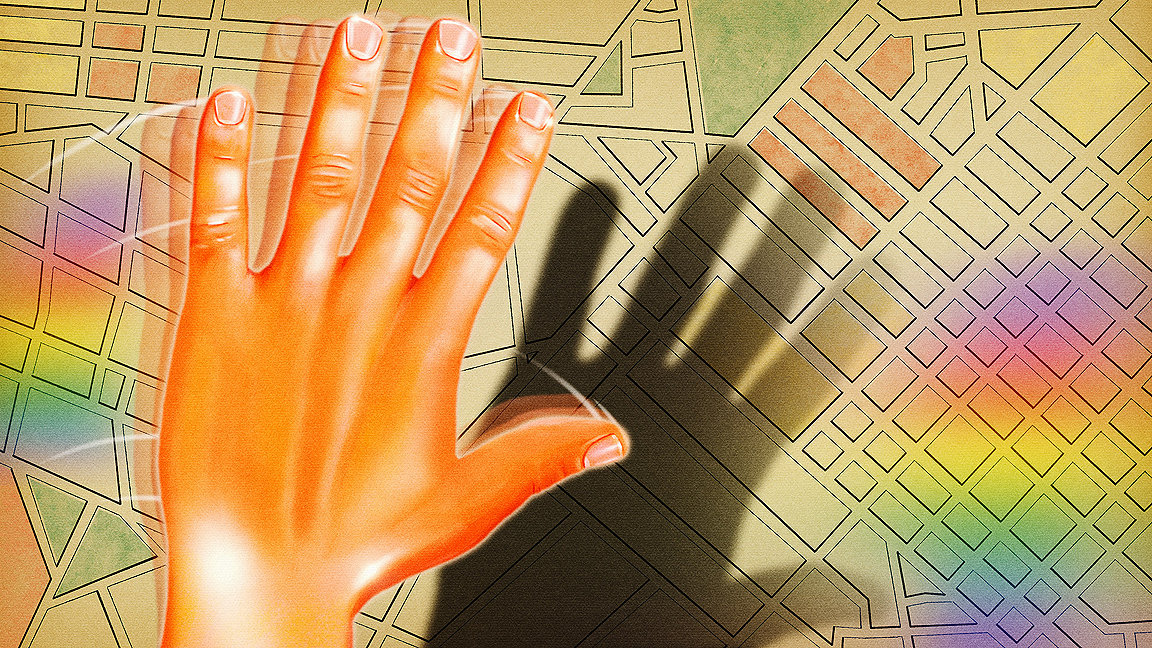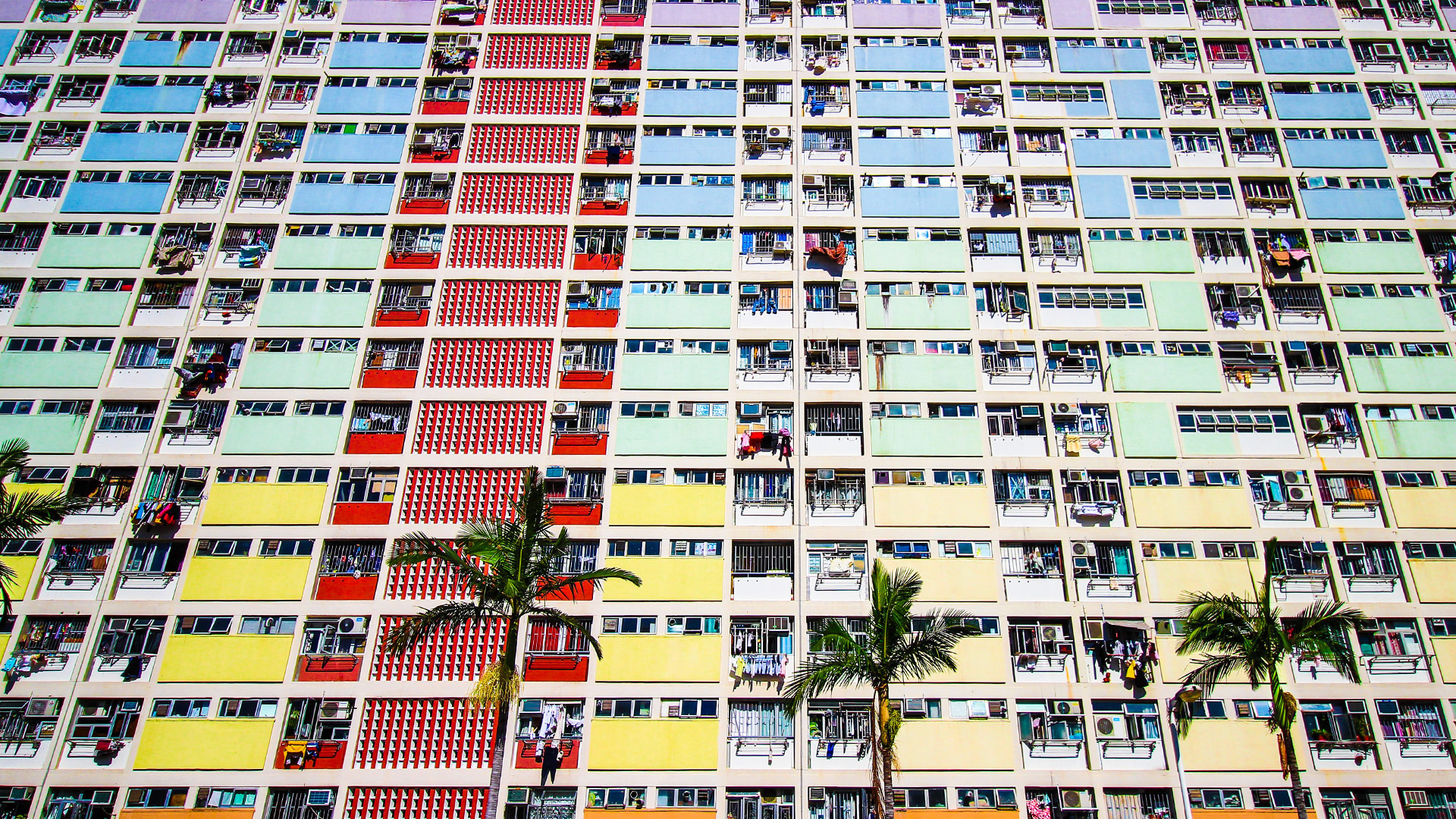
Illustration by Julia Dufosse
As You Are, a lesbian/queer café by day and bar by night in Washington DC, is bucking the trend in the US. It opened this year and is one of just 21 lesbian bars in the whole country – a decline from more than 200 in the 1980s.
The bar started as an online meeting space during the COVID-19 pandemic and featured in the Lesbian Bar Project, a campaign to protect and preserve the last few remaining lesbian bars in the US. The loss of queer venues is a trend mirrored in cities across the world, with changing behaviours and gentrification often the justification.
But for the queer community these venues aren’t just spaces to meet or drink, they are community centres, places where people can feel safe, be their true selves and learn about their history. In a predominately straight world, there is a growing recognition that these bricks and mortar venues need to be both preserved and evolved to reflect the intersectionality of the modern-day LGBTQ+ community.
Queer bars and spaces have always played a fundamental part in LGBTQ+ culture and politics, and for many have played a pivotal part in their lives. For David Perry, co-founder of BuildOUT California, an LGBT real estate association, gay venues made him feel “safe and welcome”. So much so that he moved to the Castro, San Francisco’s gay neighbourhood, in 1986 to find his own community. “I knew that whatever we were going to go through, many civil rights battles and then the AIDS pandemic, I would be among friends. I knew I would be among family,” says Perry.
Elina Street, co-founder of the Lesbian Bar Project, says going into her first lesbian bar in New York finally allowed her to be herself. “I wasn’t fully out of the closet but when I walked into Cubbyhole in the West Village, I met a new community, I met older women who then became my mentors, I met a family that I never knew I had and my whole life changed,” she recalls.
Kelly Canterford MRICS, a board member of Freehold, a UK-based LGBTQ+ forum for property professionals, says in queer venues you can fully relax. “There’s a lot said about how there are fewer queer spaces because we’re becoming more inclusive as a society,” she explains. “But if you go into a queer space, you’re just able to breathe and relax, you have a sense of belonging and can be your whole authentic self.”
A global decline in queer venues
Despite playing such a crucial role in LGBTQ+ life, traditional queer venues in cities from Sydney to New York, London, and Vancouver have seen a steep decline. In the US the number of gay bars fell from 1,234 in 2012 to 730 in 2021, a decline of 40%. These figures, collated by Greggor Mattson, professor of sociology at Oberlin College & Conservatory, found the sharpest decline among “minority groups”, with a drop of 60% in bars serving LGBTQ+ people of colour and 42% for lesbian venues over this 10-year period.
In London, a similar trend was highlighted earlier. Research by Ben Campkin and Laura Marshall from University College London revealed that between 2006 and 2017, 58% of queer venues in London, 106 bars and pubs, had closed. This also had a disproportionate impact on minority groups in the city, who were already poorly served. “One of the things it bought attention to was that most licensed LGBT premises were operated by gay men,” says Campkin, professor of urban history. “So, there’s already an imbalance in spaces for people of colour, trans people and women.”
This decline has been driven by complex social and economic changes, inside and outside the LGBTQ+ community, which are interwoven with the development and gentrification of cities. The argument is that more queer people now meet online, so bricks and mortar isn’t quite so vital. The UCL research, for example, found that 21% of venue closures in London were the result of development, 9% were down to failed lease negotiations and disproportionate rent increases and 30% simply became non-LGBTQ+ bars.
The story of the Joiners Arms in east London depicts some of these issues. In 2015 the pub was closed when a residential property developer bought the site. Two years later, in an unprecedented intervention, Tower Hamlets Council, which had seen seven queer venues close locally since 2006, ruled that any new development must include an LGBTQ+ club for at least 25 years. Fast forward to today and the development is still stalled – £100,000 promised by the developer to fund a temporary site never materialised. After a public campaign, the pub raised its own funds to set up the UK’s first community-run LGBTQ+ venue, with a distinctive focus on inclusivity.
The LGBTQ+ community needs its own spaces
What the post-pandemic trends and the Joiners Arms suggests is that despite societal changes the LGBTQ+ community wants and needs its own spaces. When awareness is raised and policies are implemented, decline can be halted quickly.
In London, since the revelation in 2017 that 58% of venues had closed, the numbers have remained stable with no permanent closures post pandemic. Political support from London Mayor Sadiq Khan through cultural protection policies have played a large part in this. “That has been really helpful in raising the profile and value of LGBT venues,” explains Campkin.
There was a similar story in the US when the Lesbian Bar Project launched its campaign during lockdown in 2020 with a documentary film and crowdfunding initiative. It raised over $117,000 to keep lesbian bars open and Mattson notes that they “retained an extraordinary 100% of their number” post pandemic.
In Sydney, the city mayor there has launched the country’s first LGBTQ social and cultural place strategy after facing stiff resistance over plans to redevelop Oxford Street. Once the epicentre of the queer scene in the city, it has lost much of its sheen and is now dubbed the ‘pink graveyard’. There were fears that the redevelopment would expunge what was left of its queer heritage and the strategy sets out five priorities to actually increase queer cultural and social spaces, linking it to its hosting of World Pride in 2023, as well as recognising its historical value.
Campkin says it’s important for the industry to understand the queer community’s historical relationship with its spaces. “There is a certain kind of heritage associated with the built environment, which might be about sites of memory that are important to these groups in the past but also about sustaining different forms of community in the present,” he says.
Perry adds that many of the LGBTQ+ bars and venues are like “sacred spaces, like a temple or a church”. He established the Rainbow Honor Walk, 44 bronze plaques in the Castro to memorialise LGBTQ+ activists, as part of protecting its history. “We need to preserve these spaces. If we don’t tell our own history, no one will,” he says. Elina Street says this is even more crucial now in the US with the rolling back of abortion rights and threats over marriage equality. “It is absolutely political,” she says. “This is all about understanding the history, celebrating it and accepting it. Homophobia is still very much here.”
Freehold’s Canterford says a key part of preserving and creating the next generation of queer spaces is ensuring that difference is understood, and everyone’s voices are heard. “We need diversity of thought,” she says “The reason we have the environment we are in is because the dominant voice tends to be a man, both in society and the LGBTQ+ community. You are in a minority and then you’re a minority within a minority as a gay woman. We need more voices in that space,” she says.
“If you go into a queer space, you have a sense of belonging and can be your whole authentic self” Kelly Canterford MRICS, Freehold
Changing communities
Street adds that some lesbian bars in the US are already embracing the changing community and are pointedly shifting from lesbian to queer to become more inclusive, the As You Are bar being one. “A lot of the bar owners have had to adapt their models because the community is changing and that’s a beautiful thing,” she explains.
Canterford adds that industry needs to be reflective of the communities it works with. “Unless we do something to change how we’re viewed externally and bring people in who aren’t like the status quo, then we’re really going to struggle in the future,” she warns.
Campkin, who has a book on queer premises being published next year, adds that the built environment would benefit from bringing in LGBTQ+ groups to the development process. “I think there are opportunities for built environment expertise to come together with LGBTQ+ interest groups in creating more purpose-designed community centred spaces,” he says.
Because as Street points out: “Everyone deserves a place to feel themselves, and any space that caters to a marginalised community is a vital space.”
“Any space that caters to a marginalised community is a vital space” Elina Street, the Lesbian Bar Project


